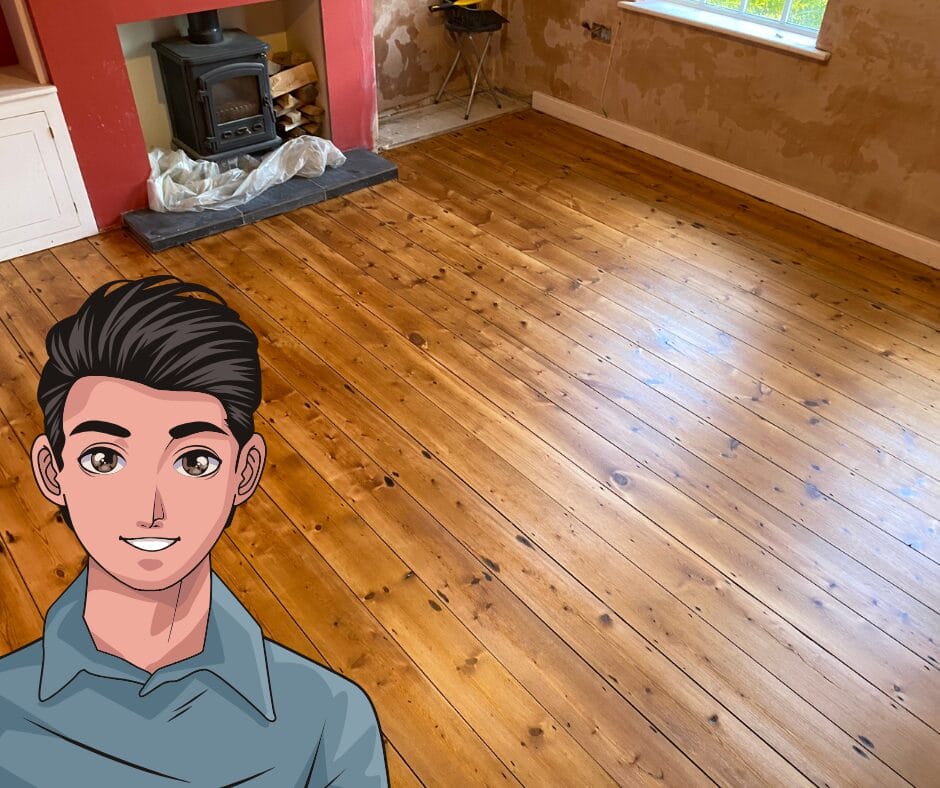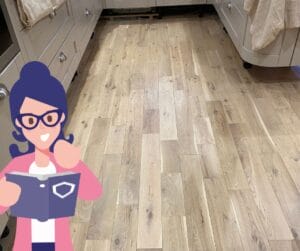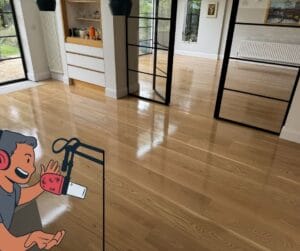If you’ve just pulled back the carpet in your home and discovered pine wood floorboards, you might feel a rush of excitement at the thought of reviving them. After all, the charm and rustic appeal of original pine floors can’t be overstated. But before you jump headfirst into restoration, there are a few things to think about. Pine floorboards may look beautiful, but are they durable? And more importantly, is it worth restoring pine floors in Huntington? Let’s take a closer look.
Below are some images of some of our clients wood floors:




The Story of Pine Wood Floors
Pine wood flooring became popular during the Industrial Revolution, largely thanks to steam-powered sawmills. Back then, concrete wasn’t widely used, so pine wood was the go-to choice for subfloors and joists, as well as floorboards. Pine was relatively easy to source and quick to work with, although it wasn’t given much time to dry before being used. Early pine floorboards were often nailed into place with iron clasp nails, which, over time, could rust and leave unsightly stains in the wood.
These pine floors weren’t originally meant to be on show. Instead, they were intended as a practical and economical solution for homes. That’s why many of these floors come with imperfections like rust stains from nails or tar around the edges—measures used to protect them from damp walls.
The Challenges of Restoring Pine Floors
So, is pine a good wood for flooring today? The answer depends on what you’re after. If you’re looking for a rustic, shabby, chic vibe, then old pine floorboards can certainly deliver. But if you’re aiming for a pristine, modern look, pine might not meet your expectations. Pine is a softwood, which means it’s more prone to dents and scratches compared to harder woods. Over time, your floors will wear, adding character and frustration if you’re hoping for a flawless finish.
An example of the rustic challenges we mean:

Looks fine, right?
Gaps Between Pine Boards: To Fill or Not to Fill?
One of the most common issues with old pine floors is the gaps between the boards. As pinewood expands and contracts with changes in humidity, gaps appear, and these can lead to chilly draughts in your room. While there are ways to fill these gaps, none of them are perfect.
For instance, a mix of sanding dust and resin can be used to create a paste that fills the gaps, but this solution is temporary. As the boards move, the filler will crack and eventually fall out. Another option is using wood slivers—thin wedges of wood glued between the boards—but these, too, can crack or split over time, leading to splinters. Flexible wood filler is an option, and while it will last longer (around four years), it still isn’t a permanent fix. In fact, many experts recommend leaving the gaps as they are, allowing the wood to move naturally.
Repairing and Sanding Pine Floorboards
Before you can restore your pine floorboards, some repairs may be needed. If there is damage to certain boards or tradesmen have cut them in the past, replacing them with reclaimed boards is ideal to keep the authentic look. Reclaimed pine floorboards will match the original wood much better than new boards, helping to maintain the floor’s character.
Once you complete any repairs, the sanding process begins. This is where things get tricky. Pine boards, especially older ones, often have stains from rusted nails or tar along the edges. While sanding can remove some of these stains, it’s important not to sand too much. Removing more than 2mm to 3mm of the wood’s surface can weaken the boards, reducing their ability to support heavy furniture. Keeping this in mind, a light sanding can bring out the natural beauty of your pine wood floor while preserving its strength.
Can You Stain Pine Wood Floors?
Staining pine floors is possible, and it’s a great way to change the colour and hide imperfections. However, there are a few things to consider. Pine, being a softwood, can be tricky to stain evenly.
Lacquer is another option for finishing pine floors, but it is less forgiving. If you damage the lacquered surface, spot repairs aren’t possible, meaning they would need to sand the entire floor down again—something that you should avoid if you had the floor sanded before.
Below are a few examples of some pine wood floors we have stained:




Is it Worth Restoring Old Pine Floors in Huntington?
So, should you go ahead and restore those old pine floors? If you love the idea of a rustic, lived-in look with plenty of character, then refurbishing original pine floorboards could be the perfect choice. These floors come with a story, and their imperfections only add to their charm.
However, if you’re aiming for the sleek, polished look of an engineered hardwood floor, you may want to think twice. Pine is soft, meaning it will show signs of wear and tear relatively quickly. Whether that’s a plus or a minus is entirely up to your personal taste.
In the end, restoring old pine wood floors is less about achieving perfection and more about embracing the history and character of your home. If you’re in the Huntington area and considering giving your pine floors a new lease of life, it’s definitely worth exploring. Just prepare yourself for a few quirks along the way!


















